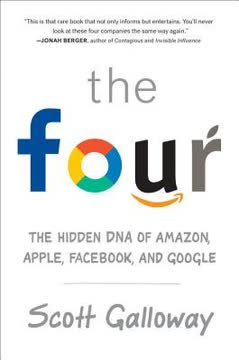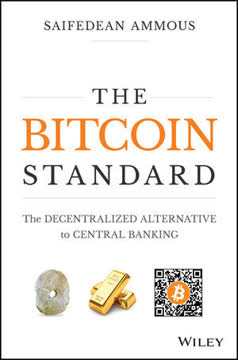Key Takeaways
1. Bitcoin emerged from the 2008 financial crisis as a decentralized alternative to traditional banking
"We have proposed a system for electronic transactions without relying on trust."
Birth of Bitcoin. On October 31, 2008, amidst the global financial meltdown, Satoshi Nakamoto released the Bitcoin white paper. This pseudonymous creator aimed to establish a peer-to-peer electronic cash system that would operate without centralized control. Bitcoin's genesis block, mined on January 3, 2009, contained a poignant message referencing bank bailouts, highlighting its purpose as an alternative to the failing traditional financial system.
Key features:
- Decentralized network with no single point of failure
- Transparent and immutable transaction ledger (blockchain)
- Limited supply of 21 million coins to ensure scarcity
- Proof-of-work consensus mechanism for security and trust
Bitcoin's early years were marked by gradual adoption among tech enthusiasts and libertarians. The first real-world transaction occurred in May 2010 when 10,000 BTC were used to purchase two pizzas, valuing each bitcoin at less than a penny. This inauspicious beginning would give way to exponential growth in both value and recognition over the following decade.
2. Blockchain technology underpins cryptocurrencies and has far-reaching applications beyond finance
"Blockchain technology can now be thought of as a general purpose technology, on par with that of the steam engine, electricity, and machine learning."
Revolutionary potential. Blockchain, the technology underlying Bitcoin, is a distributed ledger that records transactions across a network of computers. Its key innovation is the ability to create trust and consensus in a decentralized system without the need for intermediaries. This breakthrough has implications far beyond cryptocurrencies, with potential applications in various industries.
Applications beyond finance:
- Supply chain management: Tracking goods and ensuring authenticity
- Healthcare: Secure and interoperable medical records
- Voting systems: Transparent and tamper-proof elections
- Digital identity: Self-sovereign identity management
- Intellectual property: Proof of ownership and licensing
- Energy: Peer-to-peer energy trading and grid management
While cryptocurrencies remain the most well-known use case, many industries are exploring how blockchain can improve efficiency, transparency, and security. The technology's ability to create trust in trustless environments makes it a potentially transformative force across various sectors of the global economy.
3. Cryptocurrencies, cryptocommodities, and cryptotokens form a new asset class with unique characteristics
"We believe that a clearer view of this brave new world of blockchain architecture includes cryptocurrencies, cryptocommodities, and cryptotokens, just as we have had currencies, commodities, and finished goods and services in the preceding centuries."
Three categories of cryptoassets:
- Cryptocurrencies: Digital mediums of exchange (e.g., Bitcoin, Litecoin)
- Cryptocommodities: Provide access to digital resources (e.g., Ethereum's ether for computing power)
- Cryptotokens: Represent ownership or rights within specific ecosystems (e.g., Golem for distributed computing)
These cryptoassets share common characteristics such as being built on blockchain technology, having limited supply, and operating without central authority. However, they differ in their purposes and value propositions. Cryptocurrencies aim to serve as digital money, cryptocommodities provide access to digital resources or services, and cryptotokens often represent ownership or participation rights within specific platforms or ecosystems.
Understanding these distinctions is crucial for investors, as each category may have different risk profiles, regulatory considerations, and potential use cases. The diverse nature of cryptoassets contributes to their potential as a new asset class, offering unique investment opportunities and challenges.
4. Bitcoin's meteoric rise demonstrates the potential and volatility of cryptoassets
"If one had invested $100 in bitcoin in October 2009—the first time an exchange rate was established for the nascent digital currency—one would now have over $100 million."
Unprecedented returns. Bitcoin's price history is a testament to both the potential and volatility of cryptoassets. From its humble beginnings trading for fractions of a cent, Bitcoin has experienced several boom-and-bust cycles, reaching heights of nearly $20,000 per coin in late 2017 and surpassing $60,000 in 2021.
Key milestones in Bitcoin's price history:
- 2010: Bitcoin reaches parity with the US dollar
- 2013: First major bull run, reaching over $1,000
- 2017: Exponential growth to nearly $20,000
- 2018: Sharp correction to around $3,000
- 2020-2021: Institutional adoption drives new all-time highs
While these returns are unprecedented in traditional finance, they come with extreme volatility. Bitcoin has experienced multiple 80%+ drawdowns throughout its history. This volatility underscores the importance of proper risk management and the potential for both astronomical gains and devastating losses in the cryptoasset space.
5. Modern portfolio theory principles apply to cryptoassets, offering diversification benefits
"Cryptoassets have near-zero correlation to other capital market assets."
Diversification potential. Modern Portfolio Theory (MPT), developed by Harry Markowitz, emphasizes the importance of diversification to optimize risk-adjusted returns. Cryptoassets, particularly Bitcoin, have shown low correlation with traditional asset classes, potentially offering significant diversification benefits to a well-constructed portfolio.
Key considerations for portfolio construction:
- Risk-return profile: Cryptoassets often have higher potential returns but also higher volatility
- Correlation: Low correlation with stocks and bonds can improve overall portfolio efficiency
- Allocation size: Even small allocations (1-5%) can potentially enhance risk-adjusted returns
- Rebalancing: Regular rebalancing is crucial due to the high volatility of cryptoassets
Studies have shown that adding a small allocation of Bitcoin to a traditional 60/40 stock/bond portfolio has historically increased returns while only marginally increasing overall portfolio risk. However, it's important to note that past performance does not guarantee future results, and the evolving nature of cryptoassets may change their correlation patterns over time.
6. Due diligence and fundamental analysis are crucial when evaluating cryptoasset investments
"Cryptoassets is the bible for all things crypto. Whether you're a beginner or expert, you will walk away with a deeper understanding of the entire ecosystem after reading this book."
Research is key. The cryptoasset space is rife with both innovation and speculation. Conducting thorough due diligence and fundamental analysis is crucial for separating promising projects from potential scams or overvalued assets.
Key areas to analyze:
- White paper: Evaluate the problem being solved and the proposed solution
- Team: Assess the experience and track record of the project's leaders
- Technology: Understand the underlying blockchain architecture and its advantages
- Tokenomics: Analyze the token's supply, distribution, and economic model
- Community and adoption: Gauge the project's traction and user base
- Competitive landscape: Consider how the project compares to existing solutions
Investors should also be aware of common pitfalls in the crypto space, such as pump-and-dump schemes, fraudulent ICOs, and projects with unsustainable economic models. By applying rigorous analysis and maintaining a healthy skepticism, investors can better navigate the complex and rapidly evolving cryptoasset landscape.
7. The cryptoasset ecosystem is evolving rapidly, with new investment vehicles and regulatory challenges emerging
"We believe that cryptoasset investment vehicles will continue to proliferate, broadening exposure to even the most conservative investors who will eventually realize the uncorrelated value add of this new asset class."
Expanding access. As the cryptoasset market matures, new investment vehicles are emerging to provide easier access for both retail and institutional investors. These developments are accompanied by evolving regulatory frameworks as governments grapple with how to classify and oversee this new asset class.
Emerging investment vehicles:
- Exchange-traded funds (ETFs)
- Futures and options contracts
- Crypto-focused investment trusts
- Decentralized finance (DeFi) protocols
Regulatory considerations:
- Classification of cryptoassets (securities, commodities, currencies)
- Anti-money laundering (AML) and know-your-customer (KYC) requirements
- Tax treatment of cryptoasset transactions and gains
- Consumer protection measures
As the ecosystem evolves, investors must stay informed about new opportunities and potential regulatory changes that could impact their investments. The increasing institutionalization of cryptoassets may lead to greater stability and liquidity in the markets, but it may also bring new challenges and complexities.
8. Blockchain technology poses both threats and opportunities to incumbent financial institutions
"If financial incumbents don't embrace the technology themselves, Bitcoin and blockchain technology could do to banks what cell phones did to telephone poles."
Disruptive potential. Blockchain technology and cryptoassets present a significant challenge to traditional financial institutions. By enabling peer-to-peer transactions without intermediaries, these innovations threaten to disintermediate many core banking functions.
Areas of potential disruption:
- Payments and remittances
- Asset management and custody
- Lending and credit
- Trade finance and settlement
- Identity verification and KYC
However, forward-thinking financial institutions are also exploring ways to leverage blockchain technology to improve their own operations and offer new services. Many banks are participating in blockchain consortia or developing their own private blockchain solutions to enhance efficiency and reduce costs.
The challenge for incumbents is to adapt and innovate without cannibalizing their existing business models. Those that successfully navigate this transition may emerge stronger, while those that resist change risk being left behind in the evolving financial landscape.
9. Cryptoassets are particularly appealing to millennials and may reshape the future of investing
"Millennials see cryptoasset markets as a way to begin investing with a modest amount of money and in small increments, which is often not possible with stocks or funds."
Generational shift. Millennials, having come of age during the 2008 financial crisis and the subsequent rise of cryptocurrencies, are showing a strong affinity for cryptoassets. This generational preference could have significant implications for the future of investing and wealth management.
Factors driving millennial interest in cryptoassets:
- Distrust of traditional financial institutions
- Familiarity with digital technologies
- Desire for financial autonomy and control
- Attraction to the potential for high returns
- Alignment with values of decentralization and transparency
As millennials accumulate more wealth and become a dominant force in the investment landscape, their preference for cryptoassets could accelerate mainstream adoption. This shift may pressure traditional financial institutions to adapt their offerings and force regulators to create more comprehensive frameworks for cryptoasset investments.
The rise of decentralized finance (DeFi) platforms, which offer traditional financial services in a decentralized manner, further exemplifies how cryptoassets could reshape the future of investing. These platforms promise greater accessibility, transparency, and efficiency compared to traditional financial systems, potentially democratizing access to sophisticated financial products and services.
Last updated:
FAQ
What's Bitcoin and Beyond about?
- Comprehensive guide to cryptoassets: Bitcoin and Beyond by Chris Burniske provides an in-depth exploration of cryptoassets, including Bitcoin and Ethereum, and the blockchain technology that underpins them.
- Investment strategies and frameworks: The book offers a framework for evaluating and investing in cryptoassets, focusing on portfolio management and alternative assets.
- Historical and future context: It discusses the historical evolution of cryptoassets and their potential future impact on finance and investment.
Why should I read Bitcoin and Beyond?
- Timely and relevant insights: As digital currencies and blockchain technology gain prominence, this book is a crucial guide for understanding these changes.
- Expert authorship: Written by Chris Burniske and Jack Tatar, the book combines theoretical knowledge with practical investment strategies, backed by extensive research and experience.
- Comprehensive resource: It serves as a one-stop resource for understanding cryptoassets, blending historical context, technical explanations, and investment advice.
What are the key takeaways of Bitcoin and Beyond?
- Understanding cryptoassets: The book defines cryptoassets as a new asset class, distinct from traditional investments, and categorizes them into cryptocurrencies, cryptocommodities, and cryptotokens.
- Investment strategies: Emphasizes the importance of portfolio management and provides frameworks for evaluating the risks and rewards of cryptoassets.
- Historical context and future potential: Highlights the potential of cryptoassets to disrupt traditional financial systems and encourages consideration of blockchain's long-term implications.
What are the best quotes from Bitcoin and Beyond and what do they mean?
- Decentralization and trustless transactions: “We have proposed a system for electronic transactions without relying on trust.” This quote from Satoshi Nakamoto's white paper emphasizes the revolutionary potential of blockchain technology.
- Transformative investment opportunity: “The most compelling alternative asset of the twenty-first century.” This statement underscores Bitcoin's significance as a transformative investment opportunity.
- Diversification in investment strategies: “Investors are always seeking new assets to diversify their portfolios.” This reflects the importance of diversification and the unique opportunities cryptoassets offer.
How do the authors define cryptoassets in Bitcoin and Beyond?
- Three categories: Cryptoassets are categorized into cryptocurrencies, cryptocommodities, and cryptotokens, each with distinct characteristics and use cases.
- Utility and speculative value: The value of cryptoassets is driven by both utility and speculative value, crucial for understanding market behavior.
- Emerging asset class: Cryptoassets represent a new asset class with unique economic characteristics, differentiating them from traditional investments.
What investment strategies do Bitcoin and Beyond recommend?
- Portfolio diversification: The authors emphasize diversifying portfolios to include cryptoassets alongside traditional assets to mitigate risk and enhance returns.
- Modern Portfolio Theory (MPT): They apply MPT principles to cryptoassets, considering risk, return, and correlation for informed investment decisions.
- Dollar-cost averaging: Advocates for dollar-cost averaging in volatile assets like Bitcoin to reduce the impact of price fluctuations.
How does Bitcoin and Beyond address the risks associated with cryptoassets?
- Volatility and market behavior: Discusses the inherent volatility of cryptoassets and how it impacts investment returns, providing insights into market evolution.
- Speculation and crowd psychology: Highlights the role of speculation and crowd behavior in driving price movements, aiding investors in navigating the market.
- Regulatory considerations: Addresses the evolving regulatory landscape and its impact on cryptoasset value and adoption, encouraging informed investment decisions.
What is the significance of Bitcoin's supply schedule as discussed in Bitcoin and Beyond?
- Scarcity and value: Bitcoin's supply schedule creates scarcity, with a maximum of 21 million bitcoins, driving demand and value.
- Halving events: Discusses the significance of halving events, which reduce new bitcoin issuance and can create upward price pressure.
- Comparison to traditional assets: Compares Bitcoin's predictable issuance model to traditional assets, enhancing investor confidence as a long-term store of value.
How do the authors view the future of cryptoassets in Bitcoin and Beyond?
- Continued growth and adoption: The authors predict growing popularity and acceptance of cryptoassets among investors and institutions.
- Integration into traditional finance: Foresee integration into traditional financial systems, providing new investment opportunities and legitimacy.
- Innovation and evolution: Emphasizes the evolving cryptoasset landscape, encouraging investors to stay informed and adaptable.
What is the difference between cryptocurrencies, cryptocommodities, and cryptotokens as defined in Bitcoin and Beyond?
- Cryptocurrencies: Digital currencies like Bitcoin, designed for transactions, serving as a medium of exchange and store of value.
- Cryptocommodities: Assets like Ethereum, providing utility beyond transactions, enabling decentralized applications and smart contracts.
- Cryptotokens: Created on existing platforms, representing various assets or utilities within specific applications, serving different purposes.
How does Bitcoin and Beyond suggest evaluating the fundamental value of a cryptoasset?
- White Paper Analysis: Recommends examining the cryptoasset's white paper for a clear outline of its purpose, technology, and roadmap.
- Community Engagement: Emphasizes the importance of strong community and developer support for a cryptoasset's success.
- Market Positioning: Evaluates the asset's unique value proposition and potential market share within its competitive landscape.
What are some common red flags to watch for when considering an ICO, according to Bitcoin and Beyond?
- Lack of Transparency: Concerns arise if an ICO lacks clear information about the project, team, or use of funds.
- Unrealistic Promises: Be wary of ICOs with guaranteed returns or overly ambitious goals without a solid plan.
- Anonymous Teams: Approach ICOs with anonymous or unverified teams with caution, as credible projects have identifiable team members.
Review Summary
Cryptoassets: The Innovative Investor's Guide to Bitcoin and Beyond receives mixed reviews. Many praise its comprehensive overview of cryptocurrencies and blockchain technology, finding it valuable for both beginners and experienced investors. The book is commended for its balanced approach, historical context, and investment strategies. However, some critics argue it lacks depth in certain areas, becomes outdated quickly, and may oversimplify the risks involved. Overall, readers appreciate its attempt to bridge traditional finance with the emerging world of cryptoassets, though opinions vary on its long-term relevance and investment advice.
Similar Books










Download PDF
Download EPUB
.epub digital book format is ideal for reading ebooks on phones, tablets, and e-readers.




